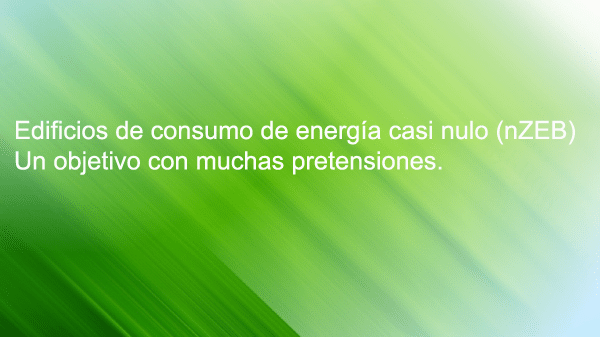-
Phone Number
-
Email Address

It seems that little by little the panorama is becoming clearer of Directives and European standards on Efficiency Energetic. It is important to make a small mention, not in vain, the rules we must obey here, are largely part, the transposition of these.
D 2010/31/UE Art. 9) Energy consuming buildings almost nil
1. Member States shall ensure that what:
a) no later than December 31, 2020, all new buildings are energy consumption buildings almost nil, and that
b) after December 31, 2018, new buildings that are occupied and owned by public authorities are buildings with almost zero energy consumption.
D 2010/31/UE Art. 12) Issuance of certificates of energy efficiency
1. Member States shall ensure that issue an energy performance certificate for:
a) the buildings or units thereof that are build, sell, or lease to a new tenant, and
b) buildings in which a public authority occupies a total useful area of more than 500 m2 and that are frequented usually by the public. On July 9, 2015, this threshold of 500 m2 will be reduced to 250 m2.
The transposition made by the PRD for which it is approved the Basic Efficiency Certification Procedure Energetics is next. (Referring to the certification, no to nZEBs)
Transitional provision second.
Obtaining the certificate and obligation to display the energy efficiency label on buildings that provide public services:
1. Buildings or building units existing buildings occupied by a public authority to which referred to in article 2.1.d) of the Basic Procedure by which this royal decree is approved will have a maximum period for obtain an energy efficiency certificate until the 9th of January 2013 when its total useful area exceeds 500m2 and until July 9, 2015 when its surface is greater than 250m2, and until December 31, 2015, when your surface is greater than 250 m2 and is under a lease.
2. The buildings or units of buildings to which referred to in Article 13, paragraph 1, of the Procedure basic, they will have the obligation to display their efficiency label power no later than January 9, 2013.
3. The buildings or units of buildings to which referred to in Article 13(2) of the Basic Procedure, with a total useful area of more than 500 m2 will have obligation to display your energy efficiency label to no later than January 9, 2013 and July 9, 2015 when its surface is greater than 250 m2.
“The difference between its application in the buildings that present public services if they are public or private lies in the fact that if they are public, the realization of the certificate and displaying the label is always mandatory if the public service occupies more than 250m2. Instead, in the case that the building is private, it is mandatory in case the building has a useful surface area greater than 500m2 and is of certification application (new construction buildings, great rehabilitation, purchase-sale or rent). »
+Info:
………………
Article written by Luis Ruiz de la Fuente Perera (Energy Management Architect) for Home Repair Care
………………
We add a link to Linkedin since there is a debate on this article that we find interesting (Here).